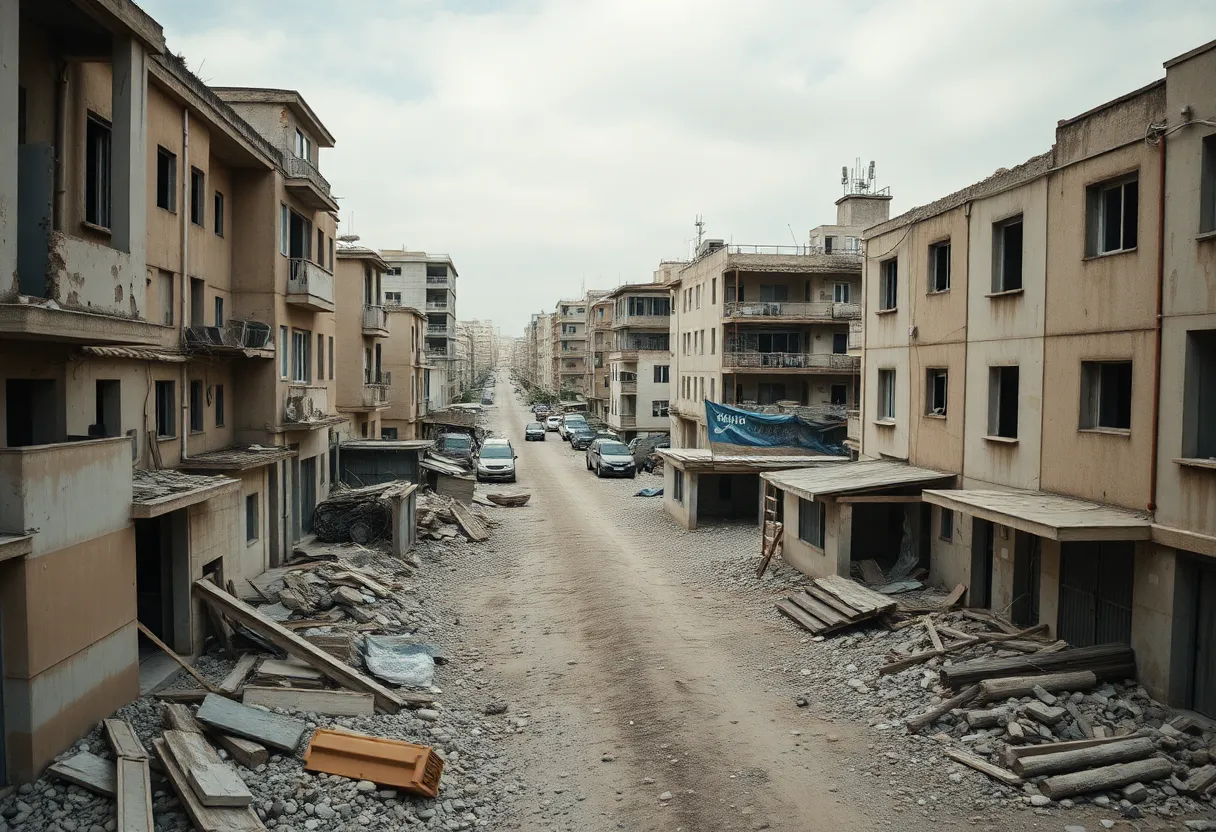News Summary
Asbestos Risks Soar Amid Ongoing Conflict in Israel
The ongoing war in northern Israel has raised alarm regarding potential exposure to asbestos hazards, with both the Environmental Protection Ministry and the Health Ministry issuing urgent warnings to the public. As tensions escalate, deteriorating conditions and structural damage have led to the release of harmful asbestos fibers from buildings previously thought to be safe.
Asbestos: A Hidden Danger
Asbestos, known for its carcinogenic properties, poses serious health risks when its fibers become airborne. Damage from direct rocket hits, shockwaves, and flying shrapnel has seriously compromised buildings housing asbestos-containing materials, raising concerns about public health safety.
Health officials have strongly advised that immediate action be taken to mitigate these hazards, urging communities to report any fears of asbestos exposure through the Environmental Protection Agency hotline at *6911. Quick reporting can help trigger necessary evaluations and removals.
Addressing the Hazard
Only licensed professionals listed in the Environmental Protection Ministry’s asbestos registry are permitted to carry out asbestos removal tasks. The ministry emphasizes the importance of not entering areas where asbestos fragments might be present and cautions against touching or removing suspected objects from damaged structures.
For those dealing with the immediate aftermath of conflict, there is an avenue for financial compensation for asbestos hazard removal available through the Israel Tax Authority. This financial support is vital, ensuring the safety and health of affected communities can be prioritized post-conflict.
Gaza Under Siege: The Asbestos Crisis
As Israel conducts airstrikes on Gaza, the destruction of buildings has caused an alarming amount of asbestos to become airborne. With an estimated 800,000 tons of bomb debris possibly contaminated with asbestos, experts predict that the health repercussions could be severe.
Locals may face a grim future, as inhalation of asbestos can lead to several types of cancer, including cancers of the lungs, larynx, and ovaries. The long-term forecast is troubling, as it is anticipated that cancer cases resulting from this conflict may surface for decades, particularly considering the immediate exposure risks faced by Gaza’s dense population.
Comparisons to Previous Disasters
Experts draw unsettling parallels between the asbestos risk in Gaza and the aftermath of the September 11 attacks in New York. Studies indicate a significant increase in asbestos-related illnesses among survivors post-9/11—over 4,300 deaths attributed to such conditions have been reported. In Gaza, the specter looms that more lives may be lost to asbestos-related diseases than to direct bombings, underlining the gravity of the situation.
The Long-Term Health Effects
It is essential to recognize the delayed onset of asbestos-related diseases, which can take decades to manifest fully. This underscores the pressing need for comprehensive assessments of environmental toxins after conflicts to help identify exposure risks.
Continuous Danger in the Current Climate
The devastating air campaign in Gaza has resulted in an estimated 15 million tons of debris, exacerbating environmental hazards due to toxic dust and debris. Without adequate cleanup and remediation, these health risks may linger long after cessation of hostilities.
Victims of previous disasters have shown that exposure to toxic mixtures of dust, smoke, and remnants can lead to chronic respiratory problems and cancer. Gaza’s population density further amplifies these risks, as many residents live in close proximity to structures that may be laden with hazardous materials.
A Call for Comprehensive Action
In the wake of such devastating environmental implications, recommendations for a thorough environmental assessment post-conflict have been put forth. Addressing the long-term consequences of the war requires identifying toxins in the environment and evaluating the potential hazards faced by the population.
As Israel navigates this turbulent time, the emphasis on public awareness and prevention measures regarding asbestos exposure is critical in safeguarding the health of current and future generations.
Deeper Dive: News & Info About This Topic
HERE Resources
FDA Takes Big Steps to Tackle Asbestos in Talc
FDA Proposes Bold Move to Combat Asbestos in Talc-Containing Cosmetics
FDA Takes Bold Steps to Tackle Asbestos in Talc-containing Cosmetics
FDA Proposes Life-Saving Rules to Tackle Asbestos in Cosmetics
New FDA Proposal Targets Asbestos in Talc-Containing Cosmetics
Asbestos Scandal Erupts at Long Beach’s Colorado Lagoon Construction Site
U.S. FDA Proposes Asbestos Testing for Talc in Cosmetics
Global Asbestos Crisis: Unmasking the Deadly Dangers
FDA Proposes Stricter Asbestos Testing for Talc-Containing Cosmetics
New Mesothelioma Lawsuit Filed Against Johnson & Johnson
Additional Resources
- Al Jazeera: Death Sentence Asbestos Released by Israel’s Bombs Will Kill Generations
- Wikipedia: Asbestos
- Al Jazeera: Palestinians in Gaza Face Asbestos Danger from War Rubble
- Google Search: Asbestos health risks
- Scientific American: Israel’s War in Gaza is Creating Enormous Hidden Health Problems
- Google Scholar: Asbestos war health effects
- Encyclopedia Britannica: Asbestos
- Google News: Asbestos exposure Israel



















